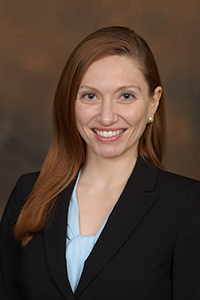
Aimee Oz is currently a junior in the chemical engineering program. She initially chose this major because of her interests in chemistry, math, and physics. Her favorite chemical engineering class so far has been Fundamentals of Process Engineering. It was the first class she took that wove together organic chemistry, thermodynamics, numerical methods and ODE’s.
Last spring (2017) she interned at NASA’s Jet Propulsion Laboratory (JPL) in Pasadena, CA. Her research project involved multi-phase, planetary chemistry modeling for biosignatures. With the mentorship of JPL Earth and planetary atmospheres scientist Dr. Pin Chen, she developed computer simulations using the US Geological Survey’s pH-redox-equilibrium program written in C (PHREEQC) and Python to investigate the impact of mineral and solution chemistry on atmospheric composition with application to extrasolar planetary habitability.
Aimee received a Caltech Student Undergraduate Research Fellowship to expand her research last summer. She worked under the guidance of Dr. Pin Chen and Caltech planetary science professor Dr. Yuk Yung to better understand what chemical and photophysical processes propagated the mass-independent fractionation of sulfur isotopes during the Archean Eon.
With the mentorship of Dr. Nick Safai at Salt Lake Community College (SLCC) she researched VOC removal and was the lead author on a paper and technical poster presented at the American Society for Engineering Education’s annual conference in June 2016. This work, “A Sophomore’s Exposure, Interest, and Aspirations in Research on Current Practices of Volatile Organic Compound Removal,” was awarded Best Student Paper in the graduate studies division. She has also been awarded the Neil R. Mitchell Endowed Scholarship by the University of Utah’s College of Engineering for the 2017-2018 academic year.
Aimee has also completed an internship working with Dr. Wesley Sanders in SLCC’s nanotechnology lab. She used a Desk V HP Denton vacuum to perform physical vapor deposition by sputter coating glass slides with copper and induce silver nanowire growth on those substrates in order to produce ultramicroelectrode (UME) arrays. She would then test the UME arrays in an electrolytic solution using cyclic voltammetry to analyze their behavior. During this time she was also part of a faculty supervised experiment and co-authored a paper where they used polyvinylpyrrolidone to direct the formation of silver nanogrids on glass substrates. Additional information regarding this experiment can be found in Printing Silver Nanogrids on Glass, Journal of Chemical Education DOI: 10.1021/acs.jchemed.6b00704.
During the fall 2016 semester Aimee worked with two other engineering students, from SLCC, to design and build an anchoring device satisfying the requirements of NASA’s 2017 Micro-g NExT challenge. Their device was tested during the third week of May in the Neutral Buoyancy Laboratory of the NASA Johnson Space Center in Houston, TX.
She also participated in the NASA Community College Aerospace Scholars Program in the spring of 2016. This was an online webinar consisting of weekly discussions on Mars-related NASA topics, quizzes, and a final project. Her project was a research paper about the projected 2033 and 2037 Mars missions and the Evolvable Mars Campaign. The onsite workshop in Palmdale, CA was an incredible experience. She collaborated with nine other hardworking and talented engineering students to build and EV3 mindstorm rover that tackled rock and rover retrieval challenges.
Aimee plans to graduate in the Spring of 2019. The advice that she would give new Chemical Engineering students is to talk to your professors, search out opportunities that interest you and never compare yourself to anyone. Also, be careful with advice.